New cars come with many more technology features than older ones, but the driving test doesn’t necessarily accommodate the abilities of this technology. Let’s look at common car technology which helps you, as a driver, but could cause you to fail your driving test if it makes you lazy or distracted while driving.
Technology you shouldn’t use in your driving test
Blind spot monitoring
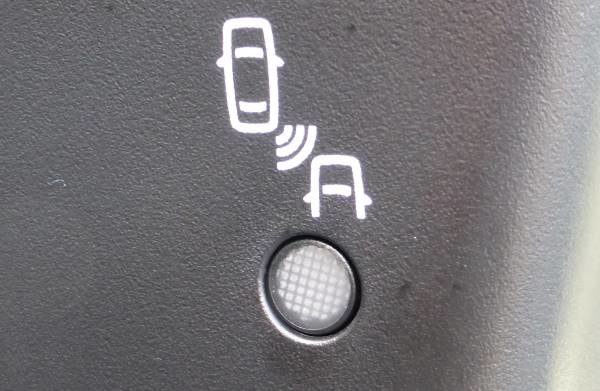
Blind spot monitoring is a system of sensors that detect approaching vehicles in your blind spots to the left and right. An orange light is displayed as another driver approaches. If you start to indicate in the direction of that driver, a warning sound might be played, or the light flashes.
Drivers can become reliant on these lights rather than turning their head to look in their blind spots. Not looking is a critical error and too many of those means you will fail if you don’t turn your head to look in your blind spot.
The radio
It should be obvious enough that the examiner and you are not there to appreciate someone else’s beats.
Reversing cameras and reversing sensors
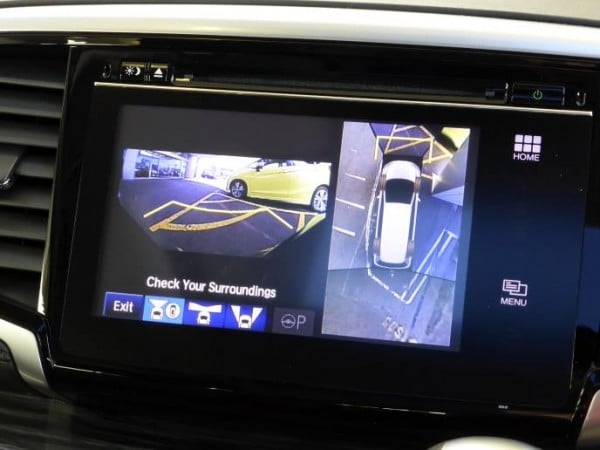
Reversing cameras are not 100% reliable and neither are reversing sensors. They should be used to augment what you see by turning your head and looking in your mirrors. If you only use the reversing camera when reversing, you might fail.
Automatic dipping headlights
If you are taking your test in the late afternoon in winter, you may have to drive in the dark. Automatic dipping headlights are not 100% foolproof and it’s easy to dazzle another driver. While this isn’t listed as a critical or immediate fail error, it’s indicative of a lack of control of your vehicle.
Cruise control
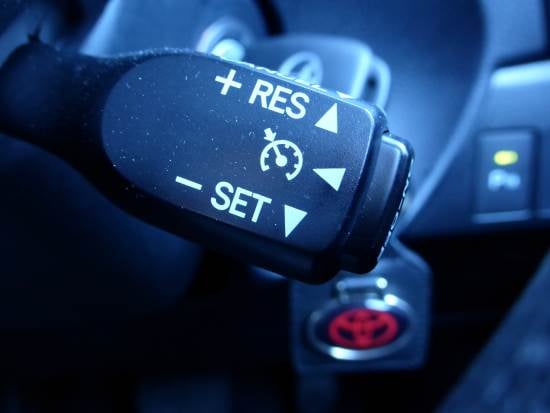
Using cruise control is not technically an error according to NZTA, but you are not fully in control of your speed, and the testing officers’ manual states that you should not use technology that is effectively controlling something that the driver should be controlling. If you have a manually activated speed limiter, check with the testing officer before you start the test.
Bluetooth smartphone integration
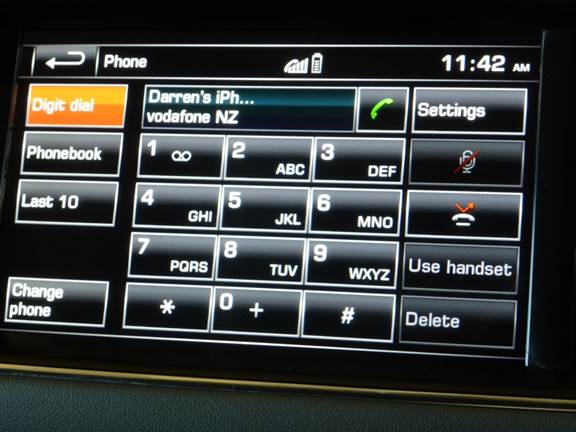
Always turn your phone off if you are taking a driving test. You don’t want to have any phone calls coming through your car’s audio system via Bluetooth. Some cars will display incoming messages on the screen. You are not allowed to answer a call while you are in the test. If you are distracted and look away from the road at your phone or the car’s screen, you may get a critical error for being distracted.
Economy modes
The examiner doesn’t care what your fuel economy is. Economy mode will rob you of power that you might need to be able to get across an intersection safely. Don’t turn it on.
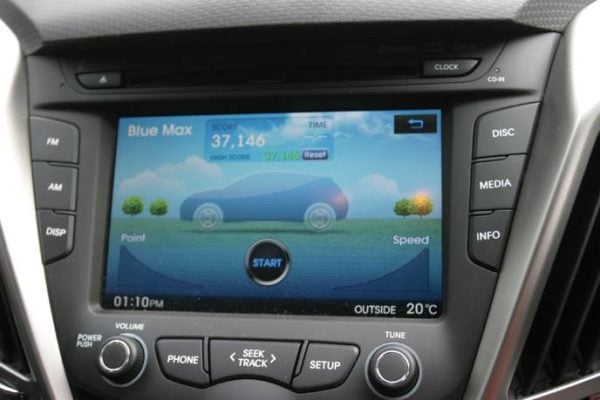
Sports and other modes
Sports modes change the gearchange characteristics and in some cars make the suspension harder. Overall, it will be a worse ride for the examiner, so it’s not a good idea.
Similarly, if you have modes for off-road driving, don’t use these.
Navigation
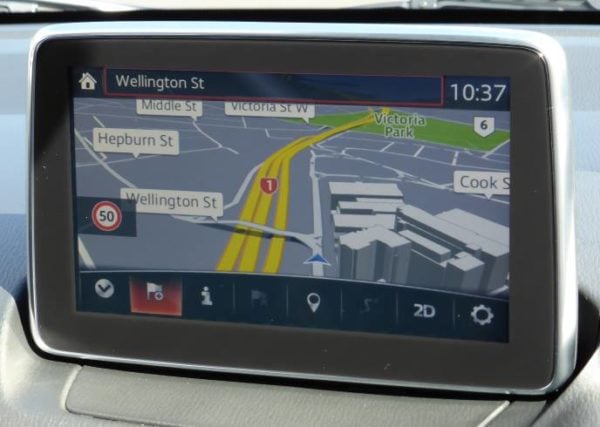
You need to follow the directions of the instructor, so turn any navigation apps off. It’s OK to have a map showing on the screen, but you should be able to read the road ahead, so make sure it’s not a distraction.
Parking assistance
Some cars will parallel park or bay park without much assistance from the driver. If the examiner requires you to park the vehicle, you must be in control at all times. You can use the reversing sensors and visualisations on any screen, but remember to look behind you and in your mirrors.
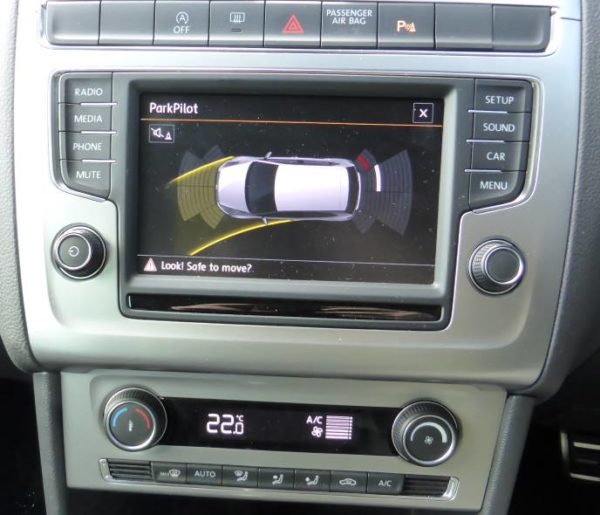
Technology you can use in your driving test
Lane departure assist
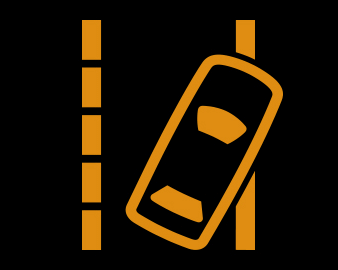
Lane departure assist gives your steering wheel a gentle nudge back in the right direction if the sensors/cameras detect you are moving out of your lane. The driving instructor most likely won’t know it’s happening (except that they’ll see you are drifting within your lane, but that’s not a critical error).
Forward collision warning
This is just a warning of a developing hazard. Usually a light will flash or you will hear an audible warning. On some cars, if you ignore this, it will brake for you (automatic emergency braking, mentioned above). Not hitting another road user is the optimum result in a driving test, but it would be up to the instructor as to whether the circumstances of it being activated were solely down to you not paying attention or whether there were mitigating circumstances, e.g. a child ran out in front of you.
Head-up displays
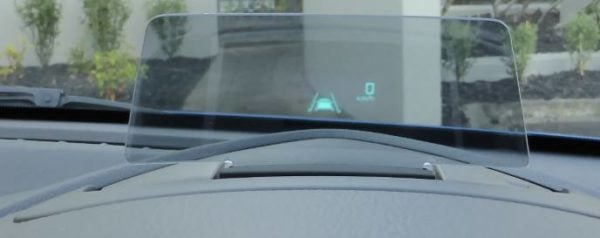
Use these to keep an eye on your speed. Some will detect the current speed limit in the area you are travelling. The examiner won’t be able to see what’s on it.
Rear cross traffic alert
This is a sensor which warns you if another vehicle is approaching in your blind spot while you are reversing. Pay attention to it, but don’t use it as an excuse for not looking properly while reversing.
Speed limiter
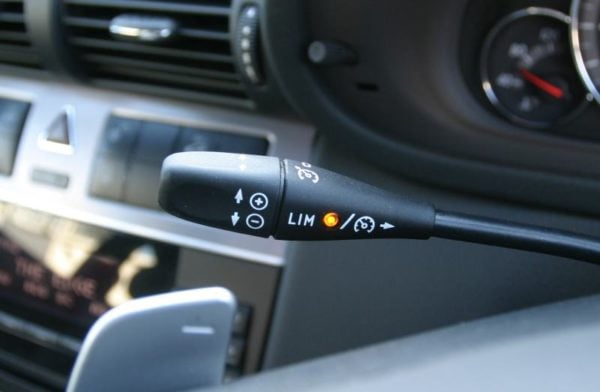
Some cars have a speed limiter which you can set to ensure that you don’t exceed the limit. If you have a fixed speed limiter (i.e. it’s hard-wired into your vehicle), this is acceptable to use. If you have a manual speed limiter, as mentioned above, check with the testing officer first.

